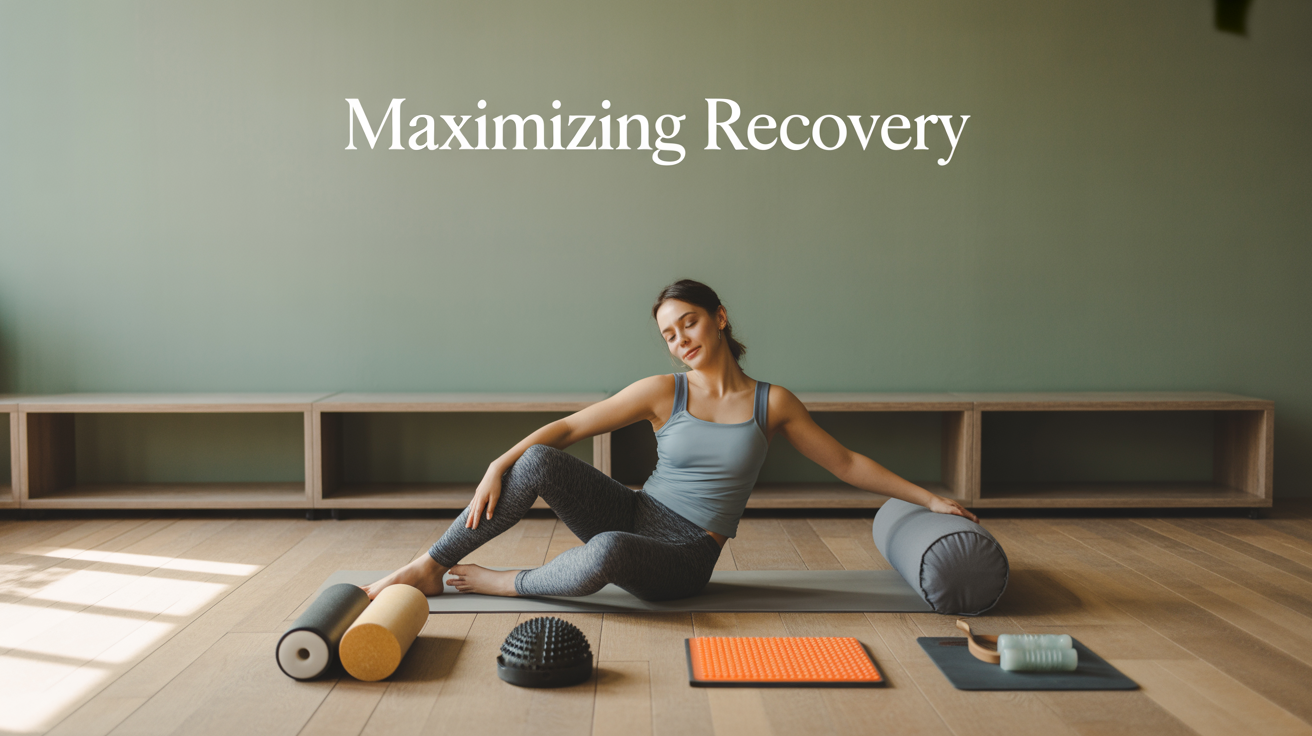
Maximizing Recovery: 5 Active Wellness Tools to Boost Post-Workout Healing
We all know the formula for a better physique and performance: push your limits in the gym, then rest.
But the modern fitness landscape has shown that recovery is not a passive process.
Active wellness tools have emerged as essential gear, transforming post-workout rest into a dynamic phase of accelerated healing and injury prevention.
By promoting circulation, reducing inflammation, and releasing muscle tension, these devices don’t just help you feel better—they help you get back to your next session stronger and sooner.
Here are five active wellness tools that should be at the core of your post-workout healing routine.
1. The Percussion Massager (a.k.a. “Massage Gun”)
Once a luxury reserved for professional athletes, the percussion massager is now a staple in home gyms.
These handheld, high-speed devices deliver rapid bursts of pressure—a technique called percussive therapy—that penetrates deep into muscle tissue.
- How it works: The intense vibration helps break up stubborn muscle knots and trigger points with pinpoint accuracy. This action dramatically increases blood flow to the targeted area, which flushes out metabolic waste (like lactic acid) and delivers fresh, oxygenated nutrients to speed up muscle repair.
- The benefit: It offers deep, localized relief that’s far more targeted and less effort-intensive than traditional foam rolling. Use it for 1-2 minutes on any tight area immediately post-workout or during an active recovery day.
- Best for: Targeting specific, deep muscle knots, and hard-to-reach areas like the upper back, shoulders, and glutes.
2. High-Density Foam Rollers and Myofascial Release Balls
The original active recovery tool remains a non-negotiable for muscle maintenance.
Foam rolling is a form of self-myofascial release (SMR), which applies sustained pressure to the fascia—the connective tissue surrounding your muscles.
- How it works: Rolling slowly over tight spots compresses the muscle and fascia, helping to “unravel” knots and adhesions. This pressure and release also promotes general blood circulation across broader muscle groups.
- The benefit: Foam rollers (and smaller, firmer lacrosse or massage balls for tighter spots) are excellent for improving overall flexibility, increasing range of motion, and reducing the severity of Delayed Onset Muscle Soreness (DOMS). They are also a budget-friendly foundation for any recovery kit.
- Best for: General muscle maintenance, pre-workout warm-ups, and post-workout cool-downs across large muscle groups like quads, hamstrings, and the back.
3. Pneumatic Compression Recovery Systems
Compression boots and sleeves have become a popular high-tech solution for lower-body recovery, especially among runners and athletes who engage in high-volume training.
- How it works: These systems use inflatable chambers to apply sequential, dynamic compression to the limbs. They inflate and deflate in a “milking” pattern, starting from the foot and moving up the leg. This process mechanically enhances blood flow and helps the body flush excess fluid and metabolic byproducts from the muscles more efficiently.
- The benefit: Users often report a significant reduction in muscle swelling, stiffness, and overall fatigue, accelerating the feeling of freshness for the next training session.
- Best for: Post-endurance events (marathons, long rides) or high-volume leg days where general muscle soreness and swelling are major concerns.
4. Targeted Red Light Therapy (RLT) Devices
Red Light Therapy, specifically low-level light therapy (LLLT), uses specific wavelengths of light (red and near-infrared) to promote cellular repair.
This is one of the newer technologies for at-home wellness.
- How it works: When applied to the skin, these specific light wavelengths penetrate the tissue and are absorbed by the mitochondria in your cells. This absorption stimulates energy production, which in turn can reduce inflammation, support collagen production, and accelerate the natural healing process of muscle and joint tissue.
- The benefit: RLT is often used to soothe joint pain, calm inflammation, and support faster recovery from minor muscle injuries without invasive or chemical intervention.
- Best for: Targeted treatment of specific joints (knees, shoulders, elbows) and localized areas experiencing chronic inflammation or minor injury.
5. Cold Compression Wraps and Devices
While the full-body ice bath is not for everyone, targeted cold compression offers a powerful, localized alternative to manage inflammation and acute pain.
- How it works: These devices combine a cold pack (or a circulating cold fluid) with adjustable compression wraps. The cold constricts blood vessels, numbing pain and reducing immediate swelling, while the compression helps limit the accumulation of fluid in the injured or overworked area.
- The benefit: It adheres to the well-established R.I.C.E. (Rest, Ice, Compression, Elevation) principle. The combined effect is more potent and consistent than a simple ice pack, making it ideal for managing acute soreness or minor sprains.
- Best for: Immediately post-injury or after a particularly grueling session that has left a joint or specific muscle area swollen and painful.
The Takeaway
Recovery is the bridge between the stimulus of your workout and the adaptation that leads to strength and performance gains.
By integrating these active wellness tools into your routine, you are no longer passively waiting to heal; you are taking an active, measurable role in maximizing your body’s ability to bounce back faster, healthier, and ready for your next challenge.


